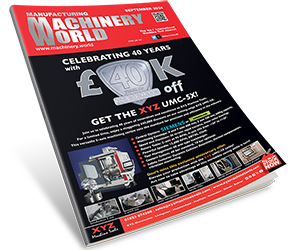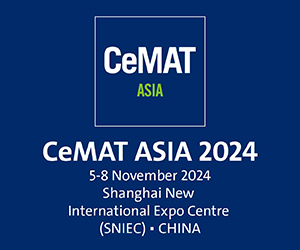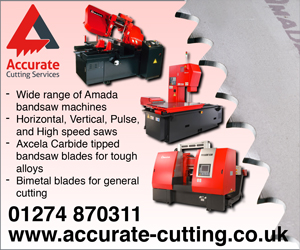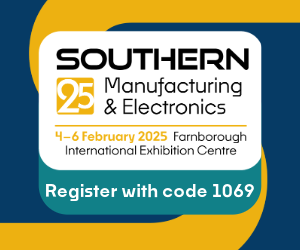In terms of economic and ecological sustainability, the call to repair rather than produce new is correct and forward-looking. When it comes to repairing moulds and other components instead of producing new ones, laser metal deposition (LMD) is a proven key technology – with a growing potential for new areas of application. At the recent ‘reFORM’ workshop, which was part of the CHIRON Group’s 2022 Open House event – the automation of LMD repair processes took centre stage. This groundbreaking technology is now available in the UK from the Engineering Technology Group (ETG), and for manufacturers that implement it, they can save time, costs and act extremely sustainably.
It’s actually like machining, only LMD works the other way around. Instead of removing material, it is applied. Using powder or wire, or both in combination. What is feed and depth of cut for one is deposit rate and layer thickness for the other. Where one cools his workpiece, the other heats it. Either way, the component has to be produced with the required quality and cost-effectiveness with the additional criteria of being energy-efficient and resource-saving.
LMD process technology – automated repairs
LMD was represented at the CHIRON Group’s ‘reFORM’ workshop in Tuttlingen where Cedric Bardenhagen, Key Account Manager at Siemens AG, gave a very clear picture of the motivation to face this challenge in his lecture. He discussed a newly produced gear wheel with a diameter of 500mm and a weight of 230kg that requires almost 2,000kW /h throughout its production chain. That’s 90% of the energy for steel production and forging the mould, and the remaining 10% for machining and post-processing.
In comparison, a gear wheel made from recycled steel uses ‘only’ 39% of the manufacturing energy. If you now repair such a wheel with an automated LMD process, you only need 17% of the energy of a new wheel, or 42% of a recycled one, to get a wind turbine running with these components. In short, repairing with additive manufacturing is highly positive for climate balance.
Materials and welding – that’s science
Heat-resistant chrome steels are generally used for moulds and tools. The stresses to which a forming tool is subjected can vary greatly. Whether it’s a forging tool for the production of a generator shaft with a dead weight of 250 tons or a cone roller for the production of seamless rings, the loads that occur are fundamentally different.
This was impressively demonstrated by Dr. Michael Nolde, a member of the management of Capilla Schweissinstrumente GmbH, using the example of a fully automated forging plant from the forging blank to the finished part. To make mould and tool more wear-resistant, various welding processes and protective layers of iron, cobalt or nickel alloys are applied. What is important when manufacturing new tools, but also when repairing them is the breakouts and worn punching surfaces. In terms of material and process technology, it is a science in itself.
However, this is the only way to achieve a good form and tool quality with long service life as the result. At best, these even surpass those of unwelded new dies. This finding represents indispensable knowledge for the successful implementation of automated LMD processes.
Multifunctional system for automated LMD process
The CHIRON Group Additive Manufacturing team used this highly specialist knowledge of material properties in welding processes to develop the AM Cube. With today’s very large variety of materials, the flexibility of the system is an important criterion for an automated LMD process. With so many shapes and contours and so many materials used in daily practice, it makes sense that the system can be changed easily and quickly. Powder is the preferred welding material on the one hand, and wire on the other – the user has all the options.
Dominik Hipp, Head of Toolmaking at Hammerwerk Fridingen GmbH, is one such user, responsible for the production of dies and tools with a daily tonnage of around 200 tons. Together with the CHIRON Group, he works on several projects, including the repair of cutting rings. “Automated welding on the AM Cube meets our quality requirements and increases service life by a factor of 2.5 to 3,” reports Hipp in his presentation. “The decisive factor in automating the LMD repair was also the fact that there are hardly any skilled workers left for manual welding. Now that the automated process is in place, it is important to introduce employees to the automated LMD process and get them enthusiastic about it.
Data is the be-all and end-all
Till Oeschger, Project Manager AM Cube at the CHIRON Group says: “Process control and data effectiveness are a must for automated LMD solutions.”
What the workshop participants recognised in the lecture was the complexity of the topic, from the physical, chemical and mechanical requirements for tools and materials to build-up welding for graded alloys. A lot of factors come together and ultimately, parameters and data must be used to construct the component to make automated LMD processes safe and reproducible.
This data is valuable on several levels. With Siemens NX CAM, the machining processes can be conveniently programmed with the system and workpiece data simulated in advance with the help of the digital twin. An error-free and already optimised program can be transferred 1:1 to the system
Data also plays an important role during machining. All relevant process data is recorded via two new digital systems from the CHIRON Group. The Via DataLine AM permits all relevant process data to be continuously displayed live, recorded and documented in a compact quality report. Product and process quality can thus be reliably assessed. The VisioLine AM system visualises and saves video files that are captured by multiple camera systems. Once parameters and tolerances have been entered, they serve as a reference and in the event of deviations, you can take immediate, targeted action.







